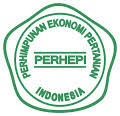KETAHANAN VARIETAS PADI LOKAL MENTIK WANGI TERHADAP PENYAKIT BLAS
DOI:
https://doi.org/10.25181/jofsa.v1i1.83Abstract
Mentik Wangi, one of the local rice varieties, is highly favored by rice farmers in Central Java. Marketers and consumers highly accept Mentik Wangi with its elliptical seeds because it has delicious taste and aroma. Besides having delicious taste, the variety is resistant to blast disease in various locations, whether planted in lowland or upland. In endemic blast disease areas, Mentik Wangi variety showed resistance to blast disease with low disease intensity, although the other varieties in these places showed quite high disease intensity. Rice blast disease is a disease that damages the rice not only on dry land, but also on rainfed and irrigation lands. At a high level of disease intensity, blast disease can cause yield losses of up to 100%. Planting resistant rice variety to prevent damage due to blast disease is one of the methods to blast disease control which is effective, inexpensive, and safe for the environment. However, control of blast disease with one component such as planting resistant rice is estimated to be ineffective in the long term, because the pathogen causes the blast disease to be able to adapt to the rice variety to form a new race that is more virulent. A rice variety that is originally resistant will gradually become susceptible to the new pathogen race. When the rice varieties which are resistant to blast disease is controlled by a single gene (monogenic resistant), the resistance of these varieties within 2-4 planting seasons will be broken by a new pathogenic race. Mentik Wangi that shows resistance to blast disease in various rice planting regions is expected to have some of the resistance genes, so that it can be used as a durable resistant variety. Keywords: Rice, Mentik Wangi, resistance, blastDownloads
References
BBPadi. 2015. Penyakit Blas Pada Tanaman Padi dan Cara Pengendaliannya. http://bbpadi.litbang.pertanian.go.id/index.php/berita/info-teknologi/content/240-penyakit-blas-pada-tanaman-padi-dan-cara-pengendaliannya. Diunduh: 1 April 2017.
Mew, T.W., Shahjahan A.K.M., Mariappan V. 1986. Diseases and disease management of rainfed lowland rice. Pages 339-348 in Progress in rainfed lowland rice. International Rice Research Institute, P.O. Box 933, Manila, Philippines.
Nasution A. dan N. Usyati. 2015. Observasi ketahanan varietas padi lokal terhadap penyakit blas (Pyricularia grisea) di rumah kaca. Prosiding Seminar Nasional Masyarakat BIODIV Indonesia. ISSN 2407-8050. 1 (1): 19 – 22.
Ou, S.H. 1985. Rice blast disease. (2nd ed). Commonwealth Mycological Institute Kew, Surrey. England. 380 p.
Prabawa P.S., I. Yulianah, dan N. Basuki. 2015. Uji Ketahanan 10 Genotip Padi Merah (Oryza sativa L.) Terhadap Penyakit Blas Daun (Pyricularia oryzae Cav.) Ras 173. Jurnal Produksi Tanaman. 3 (6): 496 – 502.
Santoso, A. Nasution, D.W. Utami, I. Hanarida, A.D. Ambarwati, S. Moeljoprawiro, dan D. Tharreau. 2007. Variasi Genetik dan Spektrum Virulensi Patogen Blas pada Padi Asal Jawa Barat dan Sumatera. Penelitian Pertanian Tanaman Pangan. 26 (3): 151 – 155.
Santoso dan A. Nasution. 2008. Pengendalian penyakit blas dan penyakit cendawan lainnya. Buku Padi 2. Hlm. 531-563. Dalam Darajat A.A., A. Setyono, A.K. Makarim, dan A. Hasanuddin (Ed.). Padi Inovasi Teknologi. Balai Besar Penelitian Tanaman Padi. Sukamandi. Badan Penelitian dan Pengembangan Pertanian.
Sudir, A. Nasution, Santoso, dan B. Nuryanto. 2014. Penyakit Blas Pyricularia grisea pada Tanaman Padi dan Strategi Pengendaliannya. IPTEK Tanaman Pangan. 9 (2): 85 – 96.
Suganda T, E. Yulia, F. Widiantini, dan Hersanti. 2016. Intensitas Penyakit Blas (Pyricularia oryzae Cav.) pada Padi Varietas Ciherang di Lokasi Endemik dan Pengaruhnya Terhadap Kehilangan Hasil. Jurnal Agrikultura. ISSN 0853-2885. 27 (3): 154 – 159.
Suwandi, H. Hamidson, dan A. Muslim. 2016. Penekanan Penyakit Blas Leher Malai Padi Menggunakan Ekstrak Kompos Jerami Padi. Jurnal Fitopatologi Indonesia. ISSN: 0215-7950. 12 (3): 104 – 108.
Taufik M. 2011. Evaluasi Ketahanan Padi Gogo Lokal Terhadap Penyakit Blas (Pyricularia oryzae) di Lapang. AGRIPLUS ISSN 0854-0128. 21 (1): 68 – 74.
TeBeest D.O., Guerber C., and Ditmore M. 2007. Rice Blast. The Plant Health Instructor. DOI. 10.1094/PH 11-2007-0313-07 APSnet. Cited on 27 August 2016 from: http://apsnet.org/edcenter/intropp/lessons/fungi/ascomycetes/pages/riceblast.aspx.
Teng P.S., Klein-Gebbinck H.W., and Pinnschmidt H. 1991. An Analysis of the Blast Pathosystem to Guide Modeling and Forcasting. pp. 1-30. Los Banos, Philippines. International Rice Research Institute.
Utami D.W., A.D. Ambarwati, A. Apriana, A. Sisharmini, I. Hanarida, dan S. Moeljoprawiro. 2010. Keragaan Sifat Tahan Penyakit Blas dan Agronomi Populasi Silang Balik dan Haploid Ganda Turunan IR64 dan Oryza rufipogon. Buletin Plasma Nutfah. 16 (2): 90 – 95.
Yuliani D. dan Y.E. Maryana. 2014. Integrasi Teknologi Pengendalian Penyakit Blas pada Tanaman Padi di Lahan Sub-Optimal. Prosiding Seminar Nasional Lahan Sub Optimal. Palembang 22-27 September 2014. ISBN 979-587-529-9. p. 835 – 845.
Yulianto dan Subiharta. 2009. Ketahanan padi varietas unggul baru terhadap penyakit blas(Magnaporthe gricea (T.T. Hebert) M.E. Barr) di lahan sawah tadah hujan Kabupaten Pemalang. Prosiding Seminar Ilmiah Nasional. BBP2TP dan UPN.
Yulianto, Sutoyo, dan B. Prayudi. 2014. Penyebaran penyakit blas pada tanaman padi di dataran rendah dan dataran tinggi Jawa Tengah. Seminar Hasil-Hasil Penelitian Pengkajian DIPA-APBN 2013 BPTP Jawa Tengah. Ungaran. 26p.
Downloads
Published
How to Cite
Issue
Section
License
Copyright (c) 2017 Journal of Food System & Agribusiness

This work is licensed under a Creative Commons Attribution-NonCommercial 4.0 International License.
With the receipt of the article by the Journal of Food System and Agribusiness Editorial Board and the decision to be published, then the copyright regarding the article will be diverted to the Journal of Food System and Agribusiness.
Politeknik Negeri Lampung as the publisher of the Journal of Food System and Agribusiness holds the copyright regarding all the published articles in this journal.
Politeknik Negeri Lampung has the right to multiply and distribute the article and every author is not allowed to publish the same article that was published in this journal.
The manuscript authenticity and copyright statement submission can be downloaded ON THIS FORM. Fill out the form and submit as a supplementary file.
All publications by Journal of Food System and Agribusiness is licensed under a Creative Commons Attribution Non-Commercial 4.0 International License.
























